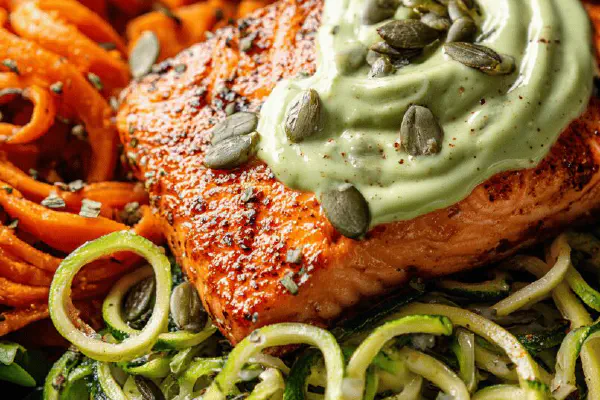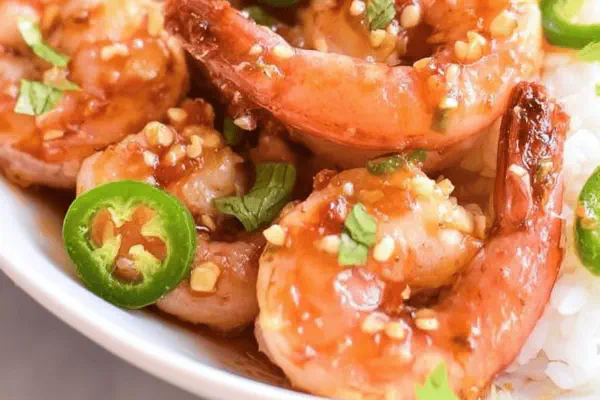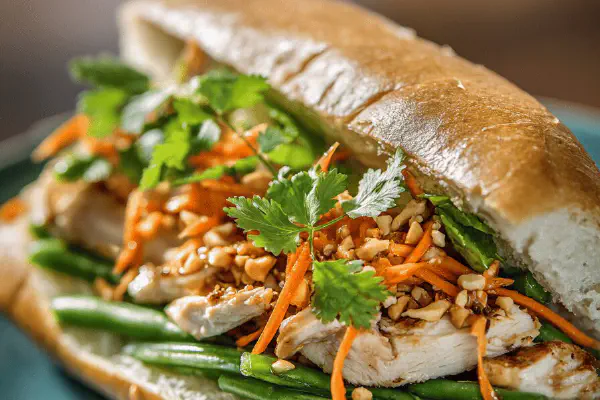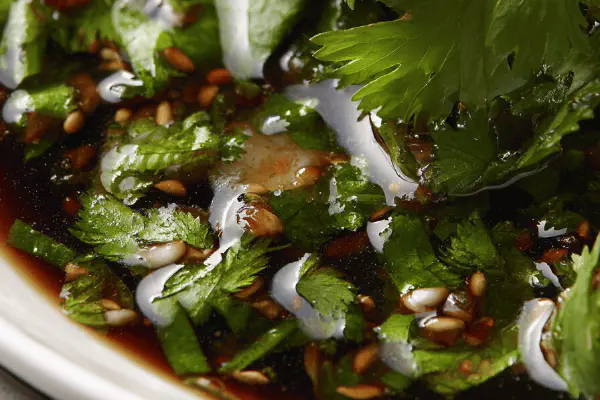Steamed Asian Salmon Twist
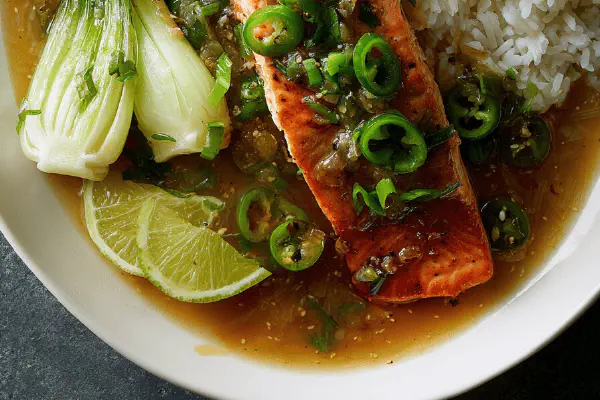
By Emma
Certified Culinary Professional
Ingredients
Marinade
- 135 ml lime juice (3/4 original 180 ml orange juice, replaced with lime)
- 60 ml soy sauce (unchanged)
- 45 ml apple cider vinegar (instead of rice vinegar, 3 tbsp)
- 20 ml honey (reduced from 30 ml)
- 10 ml maple syrup (added, 2 tsp)
- 15 ml freshly grated ginger (3 tsp, slightly more than original 2 tsp)
- 2 garlic cloves finely minced (unchanged)
- 5 slices fresh jalapeño thinly sliced (instead of 1 ml red chili flakes)
- 1 tbsp fresh oregano leaves chopped (instead of green onions)
Salmon
- 4 skinless salmon fillets about 170 g each (6 oz), prefer center cut
- Salt and black pepper to taste
- 1 tbsp olive oil (optional for finishing)
- Steamed jasmine rice and sautéed bok choy for serving
About the ingredients
Method
Marinade
- 1. Whisk lime juice, soy sauce, apple cider vinegar, honey, maple syrup, grated ginger, garlic, jalapeño, and oregano in a bowl until honey dissolves well. Intense aroma—bright but with warmth from maple and spice sharpness from jalapeños. No settling.
Salmon
- 2. Submerge salmon fillets in marinade, turning gently to coat fully. Use a zip-lock bag to save space. Refrigerate at least 90 minutes, up to 2. This soaking infuses sharp citrus tang and layered heat. Not too long or texture breaks down.
- 3. Before cooking, drain salmon, reserve marinade mix. Pour marinade into a small saucepan and bring to simmer. Reduce gently 6–8 minutes until syrupy and thick enough to coat the back of a spoon. Watch carefully—too hot burns sugars, too cold stays runny. Thick sauce clings, shiny glaze.
- 4. Set up steamer—bamboo basket or metal insert over simmering water. Make sure water doesn’t touch fish. Place salmon fillets spaced apart to generate steam evenly. Sprinkle salt and pepper lightly to dry surface.
- 5. Cover fillets with oregano sprigs for herbal fragrance during cooking—replaces green onions’ fresh zing but milder, earthier.
- 6. Steam salmon 7–12 minutes, depending on thickness. Listen: gentle hiss and steam bursts. Fillet colors change from translucent to opaque, slight separation in flakes when gently pressed by finger signals done. Avoid overcooking or firmer texture dries out.
- 7. Carefully remove salmon, drizzle thickened sauce over while still warm. Optional: a small splash of olive oil adds glossy richness.
- 8. Serve immediately with fluffy jasmine rice and quick-sautéed bok choy lightly seasoned with garlic and sesame oil for texture contrast. Bright sauce cuts fat, herbs balance.
- Tips:
- If no bamboo steamer, use colander or sieve inside pot with lid, just enough water below. Check water level to avoid drying out.
- If short on time, marinade 1 hour; less depth but still punchy flavor.
- Leftover sauce thrifty idea—glaze tofu or roasted veggies.
- Jalapeño seeds optional for heat level; remove to tame.
- Don’t crowd fillets; steam evenly or some will overcook.
- Use kitchen timer as guide but trust look and touch cues.
Cooking tips
Chef's notes
- 💡 Marinate fish min 90 minutes up to 2 hours max. Too long mushes texture, too short gets weak flavor. Use zip-lock bag to avoid space clutter, marinade seeps faster around all surfaces. Always refrigerate during marinating to keep freshness safe. Keep fillets uniform thickness; uneven pieces cook poorly steam inside still raw or dry outside.
- 💡 Simmer leftover marinade 6 to 8 minutes low heat. Watch bubbles close—not roaring boil—avoid burning sugars. Sauce needs coat spoon thickness. If too thin, wait more; too thick? Add splash water, swirl gently. Don’t rush this or get bitter burnt taste. Thickening turns marinade from sharp liquid to sticky glaze holding on fish like varnish.
- 💡 Steam fish without water touch. Water should simmer gently under basket. If water touches salmon, flavor washes out, texture soggy. Bamboo basket or metal insert works. Cover container tightly but lift lid once to check doneness by eye and finger press. Slight flake separation signals done, no guesswork from times alone. Fish keeps steaming after removal from heat; pull early not late.
- 💡 Herbs on top during steaming add aroma without bitterness. Oregano sprigs replace raw green onions’ sharp punch but milder, earthier. Place sprigs gently on fillets before steam; infuses subtle scent. Skip if allergic or dislike herb flavors but note complexity lost. Fresh jalapeño slices bring bursts of crisp heat, seeds optional to modulate spice.
- 💡 Serve with jasmine rice and quick stir-fried bok choy. Bok choy sautéed with garlic and sesame oil adds texture contrast to soft salmon flakes. Sauce cuts fat and balances savory fattiness from fish. Use small olive oil drizzle post-plate for shine and richness if desired but optional. Timing: steam 7 to 12 minutes depending thickness: thicker needs longer, thinner shorter.
Common questions
How long should I marinate salmon?
At least 90 minutes but no more than 2 hours. Shorter marinade means less flavor absorption. Too long breaks down flesh texture, mushy. Temperature matters—always refrigerate. Bag seals better than bowl; marinade penetrates both sides evenly.
Can I use rice vinegar instead of apple cider vinegar?
Sure, rice vinegar milder, less fruity tang. Adjust sweeteners down a bit to compensate. Apple cider brings deeper acidity and fruitiness—choose based on palate. Both acid types alter final flavor profile but work well marinating acidic balance mainly.
My sauce burns when reducing. What to do?
Lower heat, watch bubbles carefully, keep stirring gently if needed. Sugars scorch fast if too hot or forgotten. Simmer not boil. Add water splash if thickens too fast. Use heavy-bottomed pan spreads heat better. Remove from heat as soon as syrup coats spoon behind curve.
Can I store leftover salmon and sauce?
Salmon best eaten fresh; refrigerated cooked fish lasts 1–2 days max. Sauce can keep longer chilled, tightly sealed, up to 4 days. Reheat sauce slowly to retain glaze consistency. Discard unused marinade that touched raw fish. Freeze salmon if needed but texture suffers—best fresh steaming appreciated.
